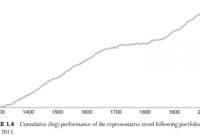SilverPepper Posts Pair Of First-Place Finishes
Alternative mutual fund company SilverPepper prides itself on making “hedge fund strategies” available to “the rest of us.” The Lake Forest, Illinois-based firm has a number of investor-friendly videos at its website , and its marketing materials generally aim to entertain as well as inform. SilverPepper’s approach is working. The firm recently celebrated its second anniversary, and for the second straight year, two of its mutual funds had the honor of finishing first within their categories: the SilverPepper Merger Arbitrage Fund (MUTF: SPAIX ) was the top-performing merger-arbitrage mutual fund for the 12 months ending October 31, and the SilverPepper Commodity Strategies Global Macro Fund (MUTF: SPCIX ) finished first out of 157 funds in the “Commodities Broad Basket” Morningstar category. SPAIX also had a strong showing in comparison to funds in the broader Market Neutral category, finishing 11th out of 158 funds for the time period being considered. For the year ending December 31, 2015, the fund returned an impressive 8.49%, ranking in the top 3% of the broad category. SilverPepper president Patrick Reinkemeyer attributed the fund’s outperformance to “hedge fund expert” Steve Gerbel, who “controlled risk by avoiding failed mergers” and boosted returns by investing in smaller-cap companies “where regulatory hurdles tend to be less, yet merger spreads are typically wider.” SPCIX finished 1st out of 157 funds for the year ending Halloween 2015, but that doesn’t mean it actually generated positive returns for what was a tough 12 months for commodities. Nevertheless, it outperformed the category average by a whopping 14 percentage points, and over the next three months, its -0.80% return remained in the top 4% of the category. Mr. Reinkemeyer said fund manager Renee Haugerud “deserves credit” for “using her fingernails-in-the-dirt research to largely avoid some of the worst commodity sectors,” including oil, and “hedging its bets” as part of “an overt tactic to protect investors’ assets.” For more information, visit silverpepperfunds.com. Past performance does not necessarily predict future results. Jason Seagraves contributed to this article.
